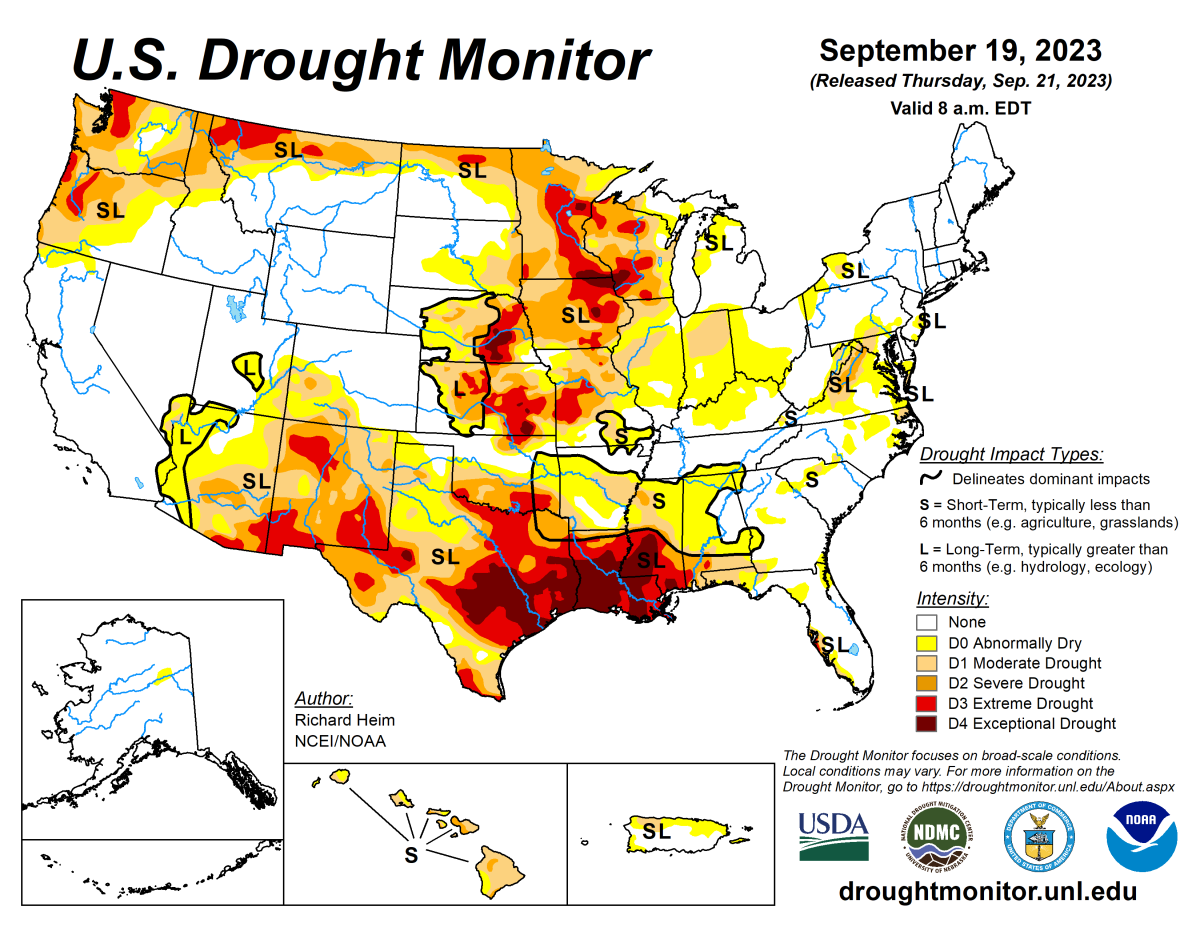
According to the September 19, 2023 U.S. Drought Monitor, moderate to exceptional drought covers 31.7% of the United States including Puerto Rico, an increase from last week’s 31.1%. The worst drought categories (extreme to exceptional drought) increased from 8.0% last week to 9.4%.
Several Pacific weather systems moved through the jet-stream flow during this U.S. Drought Monitor (USDM) week (September 13–19). The upper-level circulation still consisted of an upper-level ridge over the western contiguous U.S. (CONUS), but it was weakened by the traversing Pacific weather systems. The ridge kept most of the western U.S. dry with warmer-than-normal temperatures from northern California to Montana.
Cold fronts and surface low-pressure systems that accompanied the weather systems brought rain to the Southwest, southern Plains, Southeast, and Northeast. Heavy rain fell across western to central Texas, improving drought conditions. The rain in the East fell mostly on non-drought areas. The fronts kept temperatures cooler than normal from the Southwest to most of the southern Plains and across much of the country from the Mississippi River to the East Coast—only the Gulf of Mexico coast and New England had a warmer-than-normal week.
In addition to getting rain from frontal systems, parts of New England were soaked by the remnants of Hurricane Lee over the weekend. The northern Plains and parts of the central Plains, the Great Lakes, and the Mississippi and Ohio Valleys had a drier-than-normal week. The dryness this week was a continuation of dry conditions that have lasted for several months—in some cases for years—across parts of the country and that have dried out soils across more than half of the contiguous U.S.
Drought or abnormal dryness contracted or lessened in intensity over parts of the southern Plains and a few places in the West, central Plains, Southeast, and Upper Mississippi Valley. But the continued dry conditions resulted in expansion or intensification of drought and abnormal dryness across large parts of the Mississippi and Ohio Valleys, and parts of the Mid-Atlantic states, Southeast, Pacific Northwest, and Puerto Rico.
Nationally, expansion exceeded contraction, so the nationwide moderate to exceptional drought area increased this week. Abnormal dryness and drought are currently affecting over 136 million people across the United States including Puerto Rico—about 44.0% of the population.

The full U.S. Drought Monitor weekly update is available from Drought.gov.
In addition to Drought.gov, you can find further information on the current drought on this week’s Drought Monitor update at the National Drought Mitigation Center.
The most recent U.S. Drought Outlook is available from NOAA’s Climate Prediction Center. The U.S. Department of Agriculture’s World Agriculture Outlook Board also provides information about the drought’s influence on crops and livestock.
For additional drought information, follow #DroughtMonitor on Facebook and Twitter.



